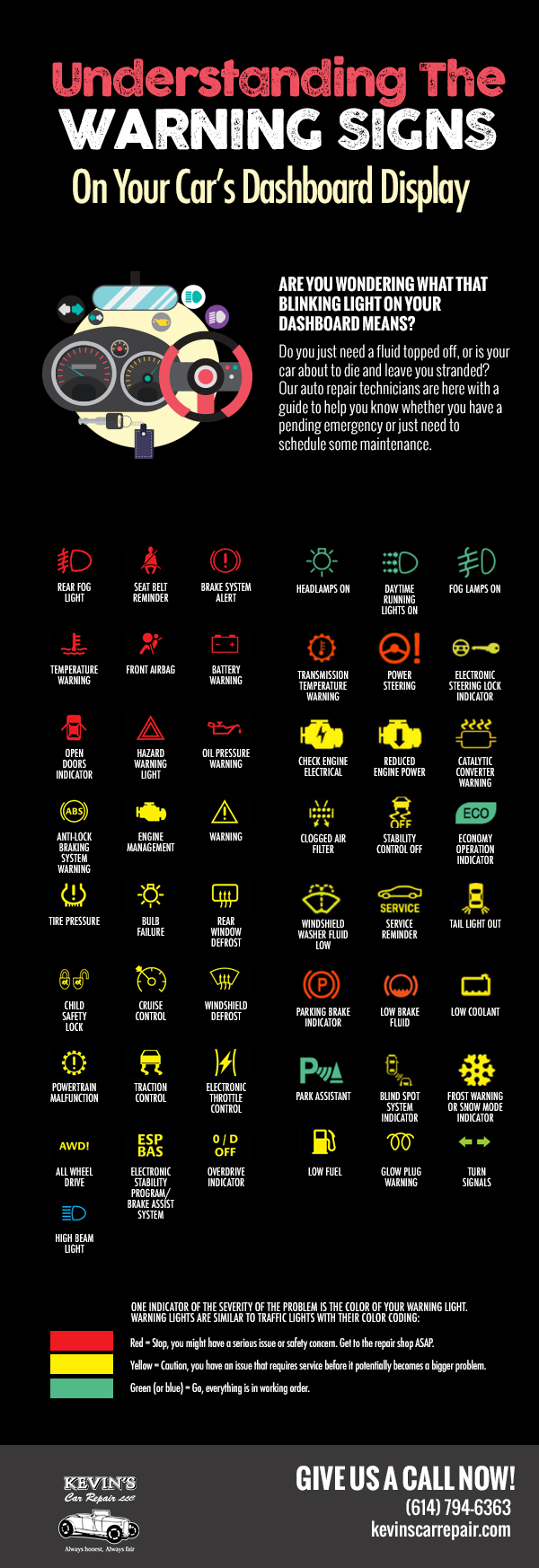Understanding The Relevance Of Your Cars And Truck'S Warning Signals: What They Actually Stand For
Understanding The Relevance Of Your Cars And Truck'S Warning Signals: What They Actually Stand For
Blog Article
Content Author-Faulkner Dalgaard
When you lag the wheel, those glowing caution lights on your control panel can be a bit perplexing. Do you know what they're attempting to tell you about your cars and truck's health? Recognizing the value of these lights is crucial for your safety and the durability of your lorry. So, the next time one of those lights appears, wouldn't you intend to understand its message accurately and take the required actions to address it?
Common Warning Lights and Interpretations
Identify typical warning lights in your auto and recognize their definitions to ensure secure driving.
The most regular caution lights include the check engine light, which indicates issues with the engine or exhausts system. If this light begins, it's essential to have your automobile inspected promptly.
The oil pressure warning light indicates low oil pressure, requiring instant attention to prevent engine damage.
https://www.cnbc.com/2022/03/18/ev-mechanic-carl-medlock-found-a-niche-fixing-teslas-.html flashing battery light might recommend a defective billing system, possibly leaving you stranded if not resolved.
The tire pressure monitoring system (TPMS) light signals you to low tire pressure, influencing lorry security and fuel efficiency. Neglecting this could bring about hazardous driving problems.
The ABS light shows a trouble with the anti-lock braking system, endangering your capacity to stop promptly in emergencies.
Last but not least, the coolant temperature level advising light warns of engine overheating, which can cause serious damages if not resolved promptly.
Comprehending detailing near me will help you address problems quickly and keep secure driving problems.
Relevance of Prompt Interest
Recognizing the typical caution lights in your car is only the initial step; the relevance of promptly addressing these cautions can not be stressed sufficient to guarantee your security when traveling.
When a caution light illuminates on your control panel, it's your auto's means of interacting a possible problem that requires focus. Overlooking these warnings can lead to a lot more serious problems later on, compromising your security and possibly costing you a lot more out of commission.
Motivate interest to warning lights can protect against malfunctions and accidents. As an example, a blinking check engine light might suggest a misfire that, if left neglected, can trigger damage to the catalytic converter. Addressing this promptly can save you from a costly repair service.
In a similar way, a brake system cautioning light may signify reduced brake liquid or worn brake pads, critical parts for your safety and security when driving.
Do It Yourself Troubleshooting Tips
If you notice a warning light on your dashboard, there are a few do it yourself repairing tips you can try before looking for expert aid.
The initial step is to consult your cars and truck's handbook to comprehend what the certain caution light indicates. Sometimes the problem can be as straightforward as a loose gas cap triggering the check engine light. Tightening the gas cap might fix the problem.
One more typical concern is a low battery, which can cause different cautioning lights. Checking the battery connections for deterioration and ensuring they're protected might repair the problem.
If a warning light lingers, you can attempt resetting it by disconnecting the car's battery for a couple of minutes and after that reconnecting it. Additionally, inspecting your automobile's liquid degrees, such as oil, coolant, and brake liquid, can aid repair alerting lights connected to these systems.
Verdict
Finally, recognizing your automobile's caution lights is important for maintaining your lorry running efficiently and securely. By promptly addressing these alerts and recognizing what they imply, you can prevent pricey fixings and potential failures.
Bear in mind to consult your vehicle's manual for certain details on each advising light and act appropriately to make certain a hassle-free driving experience.
Stay notified, remain risk-free on the road!
